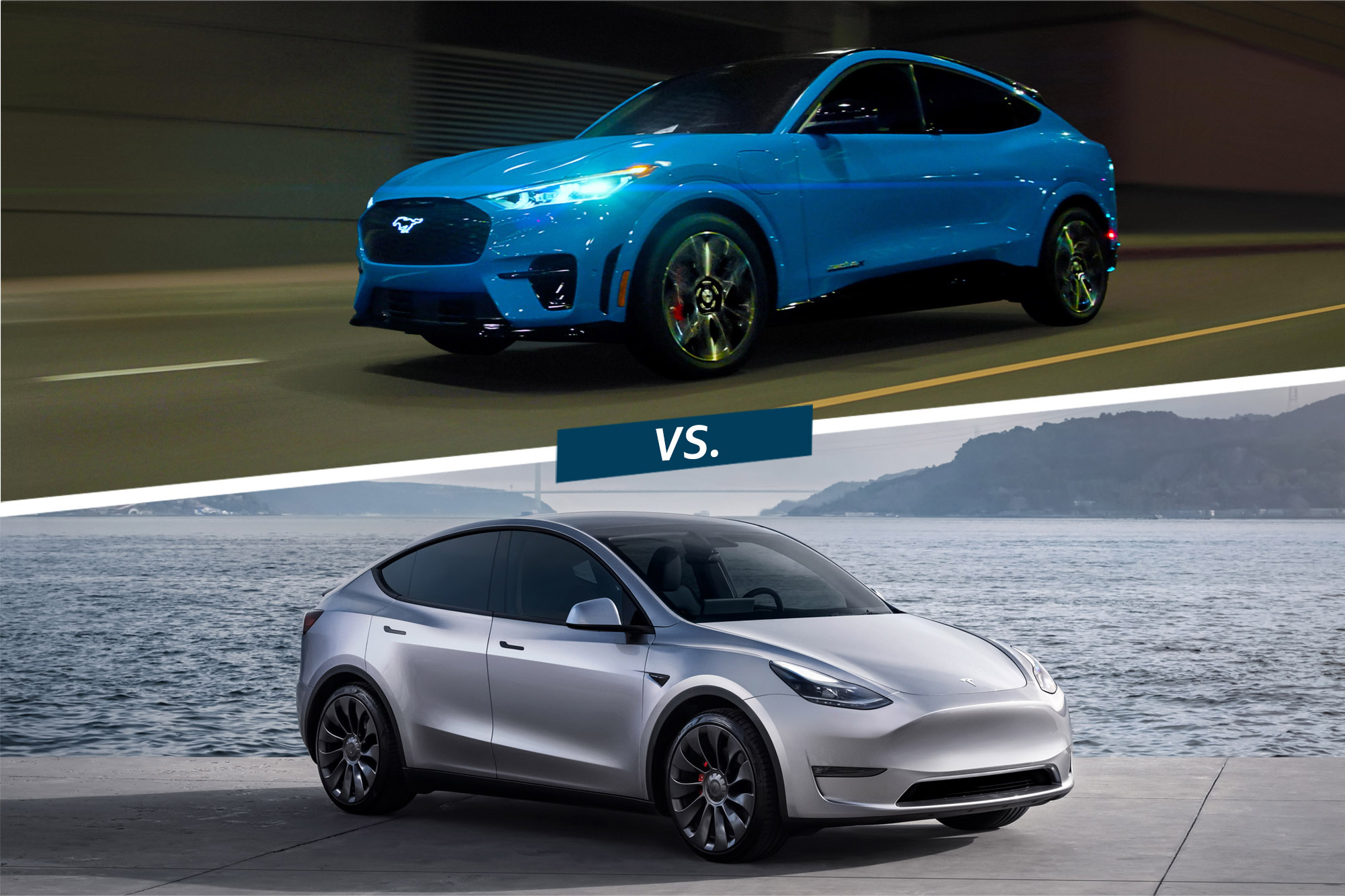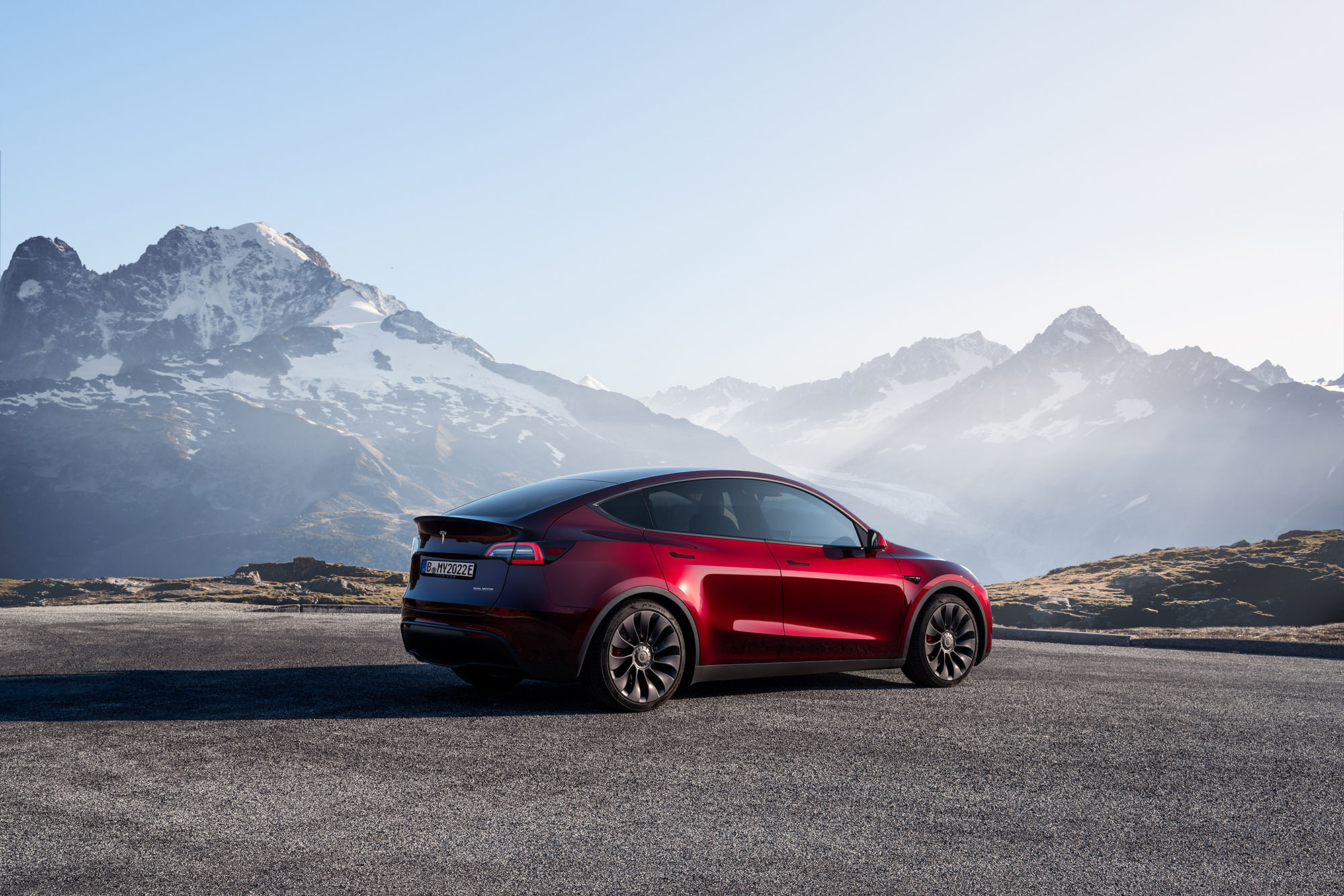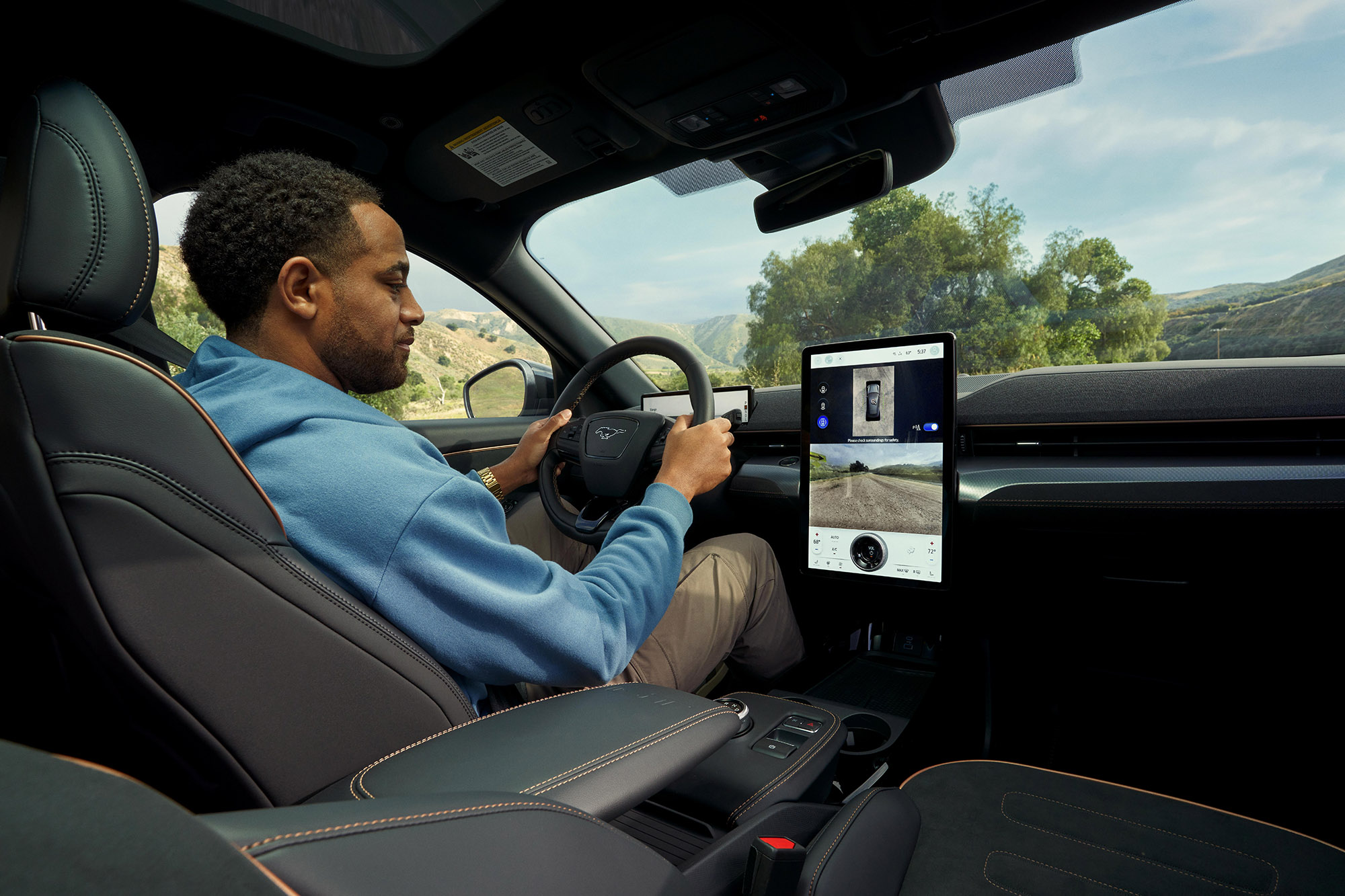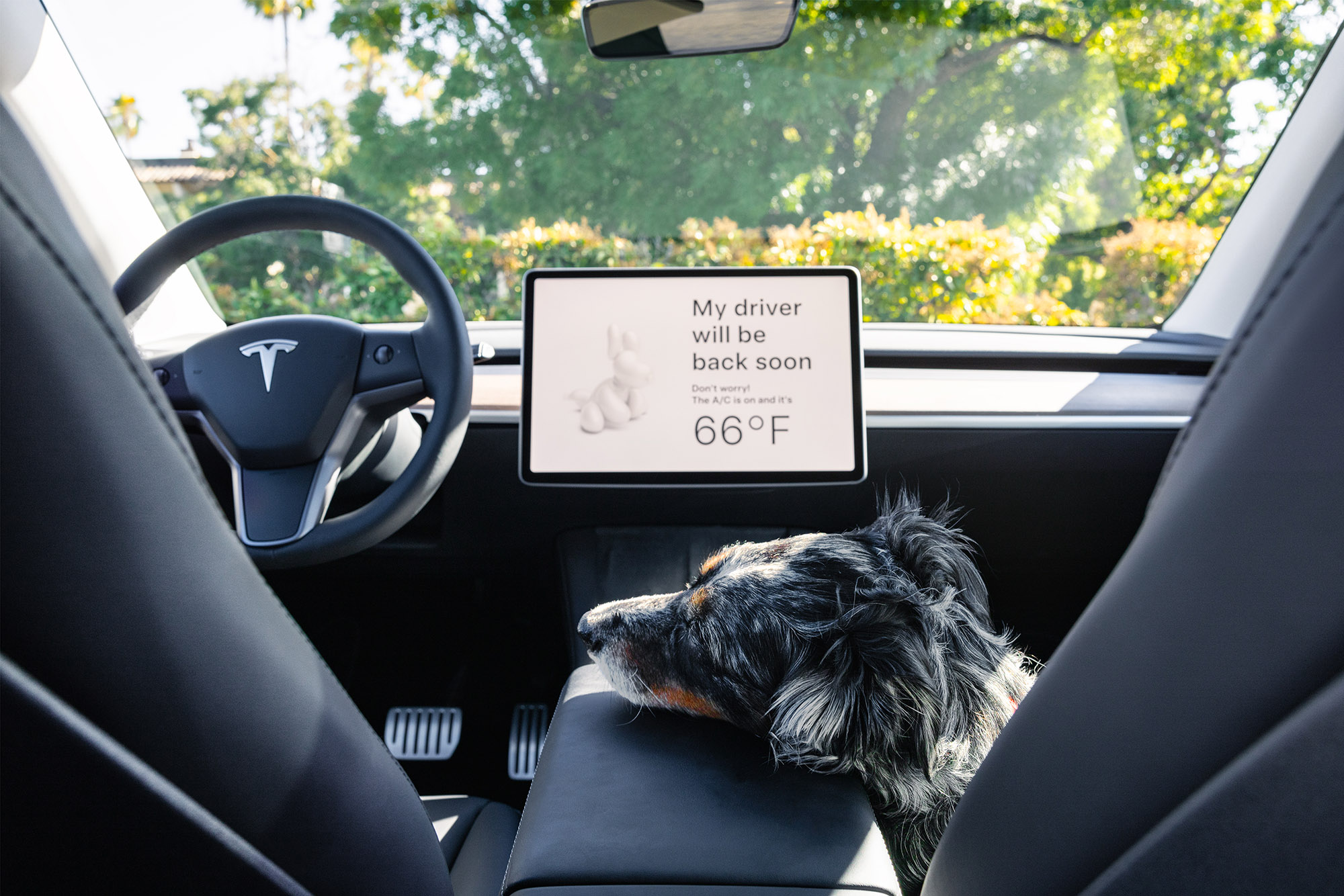Compared: 2023 Ford Mustang Mach-E vs. 2023 Tesla Model Y
While Mach-Es languish on lots, Tesla can't build enough Model Ys.
 Ford | Tesla
Ford | Tesla
When it comes to electric compact crossovers, the Tesla Model Y is king. It's among the bestselling vehicles — not just EVs — in the United States, and yet competitors such as the Ford Mustang Mach-E can't seem to gain traction.
It could be because the Model Y qualifies for the full $7,500 federal tax incentive, whereas the Mustang Mach-E is excluded. Or it could be because the Tesla has superior range and energy efficiency.
 Ford
Ford
The Mustang Mach-E Costs Less to Get Into Than the Model Y
Base to base, Ford's Mustang Mach-E costs less than Tesla's Model Y — $42,000 versus $46,000. Adding all-wheel drive (AWD) to the Ford boosts the price to $45,000. The AWD Tesla Model Y Long Range Dual Motor starts at $51,000.
Then there's the battery to consider. Ford offers two: one providing 70.0 kilowatt-hours of energy and the other 91.0. The larger unit delivers better range, and when matched with two motors for AWD, it raises the Mach-E's outlay to $51,000. That's neck and neck with the comparable Model Y Long Range.
Those looking for sub-4.0-second zero-to-60-mph times and racier styling can get them in either vehicle for a premium. Ford offers the GT and GT Performance models for $54,000 and $59,000, respectively, with the latter boasting magnetorheological dampers for superior handling. Or you can purchase the Model Y Performance at a competitive $54,000.
 Tesla
Tesla
The Model Y Will Hold More of Your Cargo
Tesla equips every Model Y with a UV-blocking glass roof, heated front and rear seats, a heated steering wheel, and a wireless device-charging pad. Ford provides the last for free but charges extra for the rest.
The two vehicles are about the same size inside, with each accommodating five occupants. For $3,000, Model Y Long Range shoppers can add two more seats in the back, but that third row won't fit the average adult, and it'll cut rear cargo volume down to 12.8 cubic-feet (from 30.2 cu-ft). The Model Y's cargo volume behind the front seats measures up to 72.1 cu-ft.
 Ford
Ford
As for tech, Model Y owners need to look to the center 15.0-inch screen for most things, including checking their speed and adjusting the rain-sensing windshield wipers. The Mach-E has a more traditional setup, with a 10.2-inch digital instrument cluster in front of the driver and a 15.5-inch display in the center stack for infotainment.
Between the two, only the Mach-E provides hands-free driving capability, as every buyer gets a 90-day trial of Ford's BlueCruise tech. Those who like it can pay $2,100 for a three-year subscription. Tesla, meanwhile, offers some interesting (albeit not hands-free) driver-assistance features of its own with the $6,000 Enhanced Autopilot suite or the $12,000 Full Self-Driving package.
At 4.7 cu-ft, the frunk in the Mustang Mach-E is larger than the one in the Tesla. The rest of the Mach-E's cargo space — measuring up to 29.7 and 59.7 cu-ft behind the second and first rows — falls short compared with the Model Y.
 Tesla
Tesla
Model Y Wins in Energy Efficiency and Range
The base Model Y returns 129/116/123 MPGe city/highway/combined and can go 279 miles between charges, per the EPA. Selecting either the Long Range at 127/117/122 MPGe or the Performance at 115/106/111 MPGe will yield 330 miles and 303 miles of range, correspondingly.
The most efficient Mustang Mach-E is the entry-level 70.0-kWh rear-driver, with an EPA rating of 110/96/103 MPGe. And its range is middling at 247 miles. The least efficient Mach-E — the 90/77/82-MPGe GT Performance — actually boasts more range at 260 miles.
Those who need a 300-mile-or-higher rating to help curb their range anxiety might opt for the 312-mile Mach-E California Route 1 with AWD instead of the cheapest AWD model, which needs a charge after 224 miles.
All vehicle pricing includes MSRP plus destination charges (set at the time of publication), and will be rounded to the nearest thousand.
Written by humans.
Edited by humans.
 Beth Nichols
Beth NicholsAfter graduating from the University of Michigan, Beth Nichols stumbled into automotive journalism and found her footing, jumping between a few car magazines before going freelance. Her head, once full of useless facts about literature and art history, now holds useless facts about vehicles. She edits, checks, and occasionally creates content for Capital One, and though she understands it’s customary to write a bio in the third person, I don’t like it.
Related articles
View more related articles